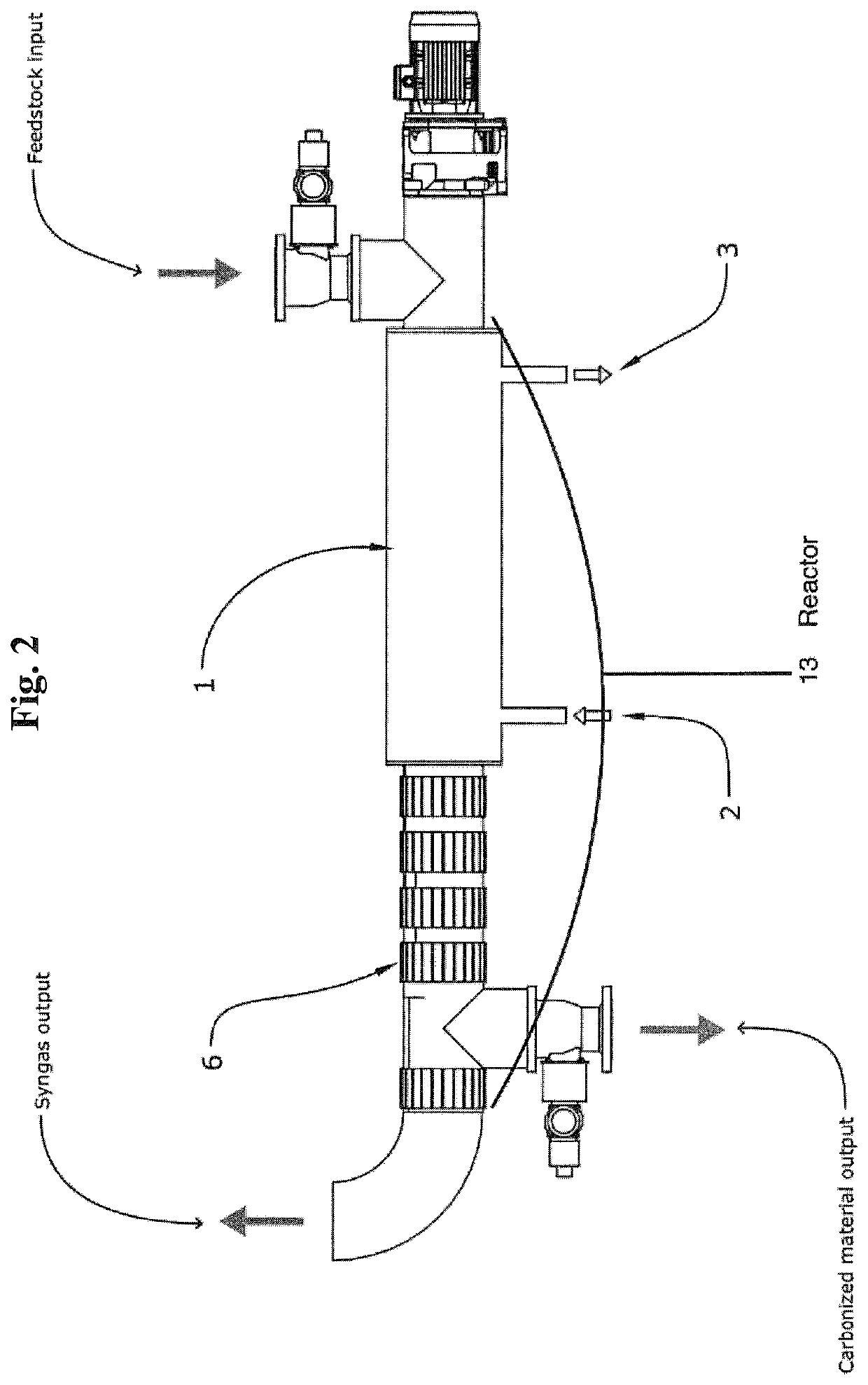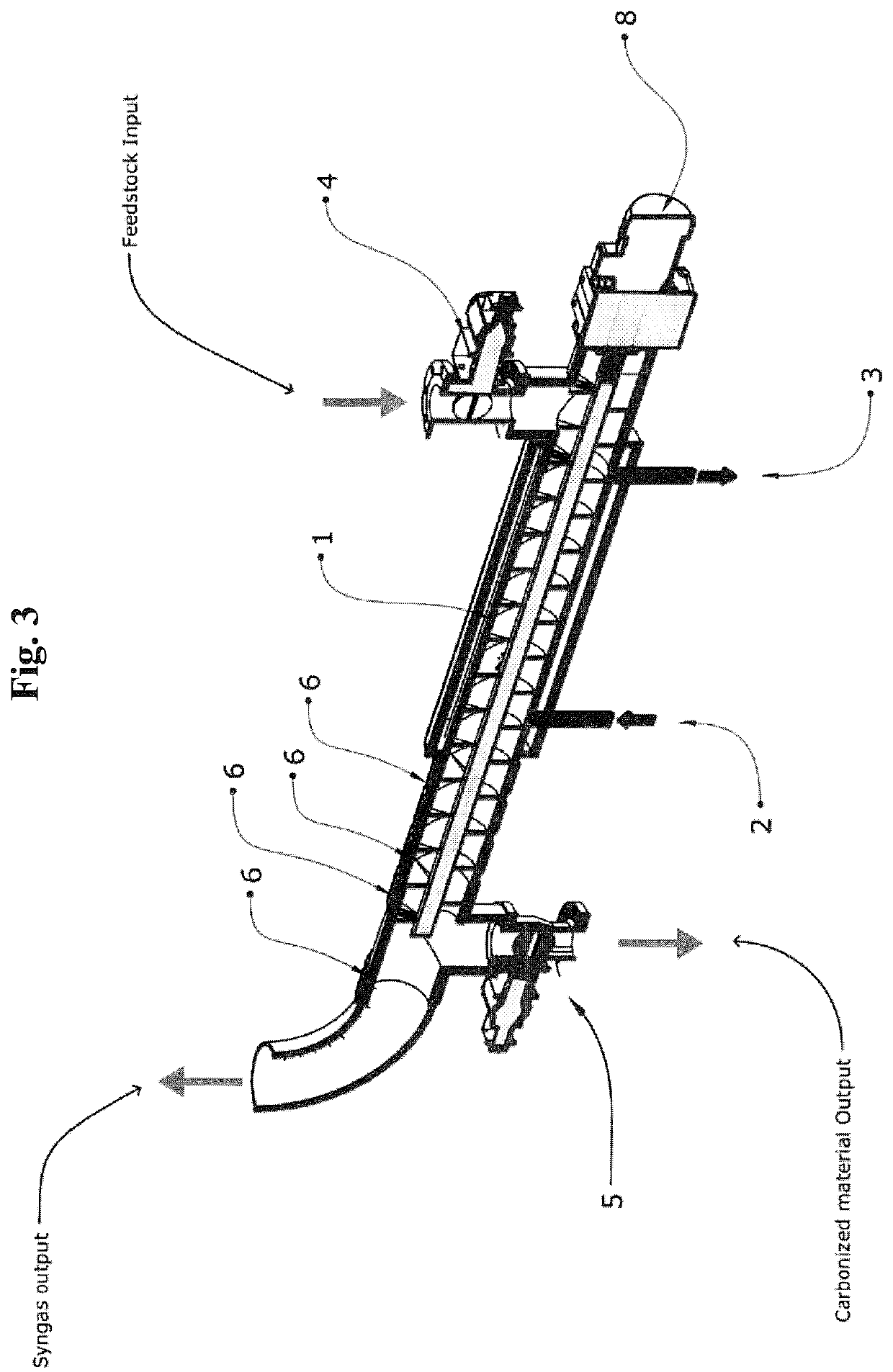Hybrid pyrolysis system and method
a hybrid pyrolysis and pyrolysis technology, applied in the direction of indirect heat exchangers, lighting and heating apparatus, coke ovens in horizontal chambers, etc., can solve the problems of inability to achieve pyrolysis, and low quality of the result of such decomposition process, etc., to achieve efficient pyrolysis of organic materials
- Summary
- Abstract
- Description
- Claims
- Application Information
AI Technical Summary
Benefits of technology
Problems solved by technology
Method used
Image
Examples
Embodiment Construction
[0019]As already mentioned in the Background, systems and methods for performing the pyrolysis of organic materials have been invented a long time ago, and there are actually many ways to perform pyrolysis.
[0020]Three of the most common and commercially frequent ways in which pyrolysis of organic material is carried out have been referenced to in the Background, but all of them have one or more disadvantageous properties which make them non-economically viable, due to excess of energy which is required to perform the pyrolysis in a way which allows to obtain a resulting carbonized material that can be reused and it is therefore of good quality.
[0021]The present disclosure aims at solving the aforementioned inefficiency and quality problems.
[0022]Embodiments of the disclosure include a method to efficiently carry out the pyrolysis of organic material. In one of the embodiments, such method may be performed through the injection of organic material in a container, also called reactor ...
PUM
| Property | Measurement | Unit |
|---|---|---|
| temperature | aaaaa | aaaaa |
| temperature | aaaaa | aaaaa |
| temperatures | aaaaa | aaaaa |
Abstract
Description
Claims
Application Information
 Login to View More
Login to View More - R&D
- Intellectual Property
- Life Sciences
- Materials
- Tech Scout
- Unparalleled Data Quality
- Higher Quality Content
- 60% Fewer Hallucinations
Browse by: Latest US Patents, China's latest patents, Technical Efficacy Thesaurus, Application Domain, Technology Topic, Popular Technical Reports.
© 2025 PatSnap. All rights reserved.Legal|Privacy policy|Modern Slavery Act Transparency Statement|Sitemap|About US| Contact US: help@patsnap.com



